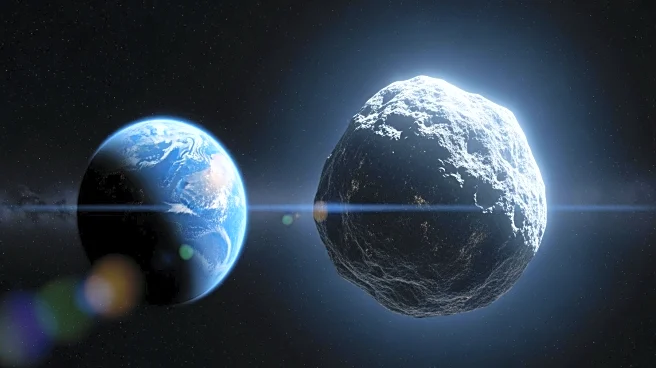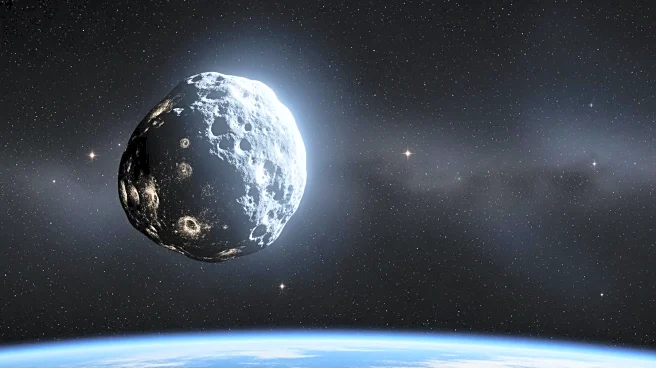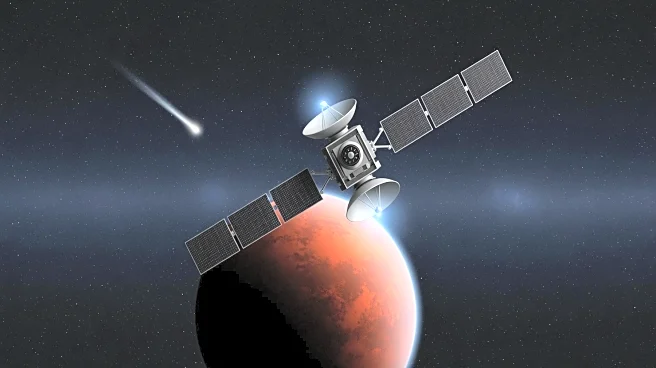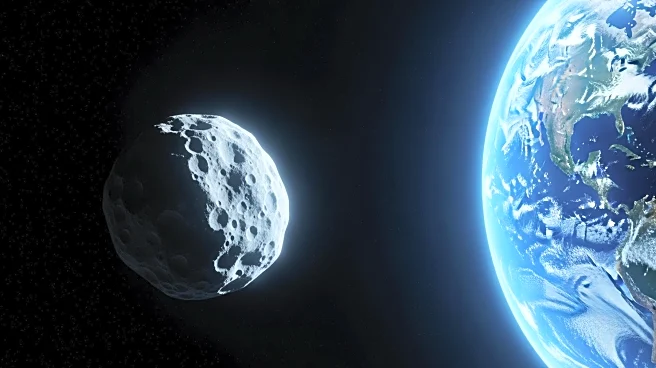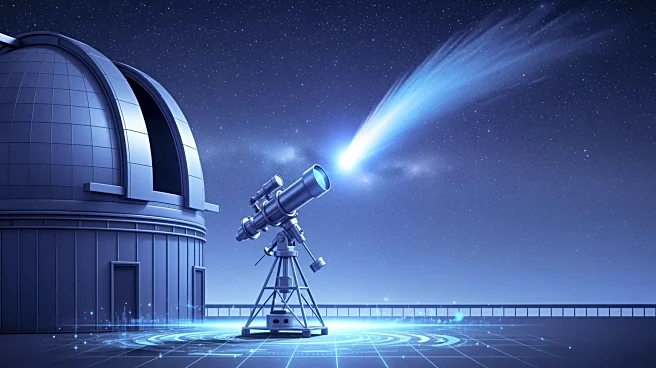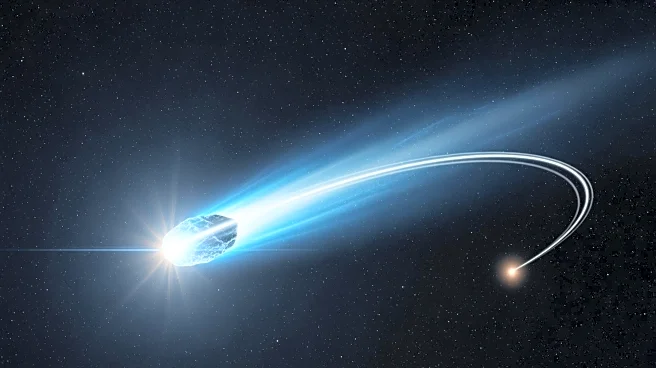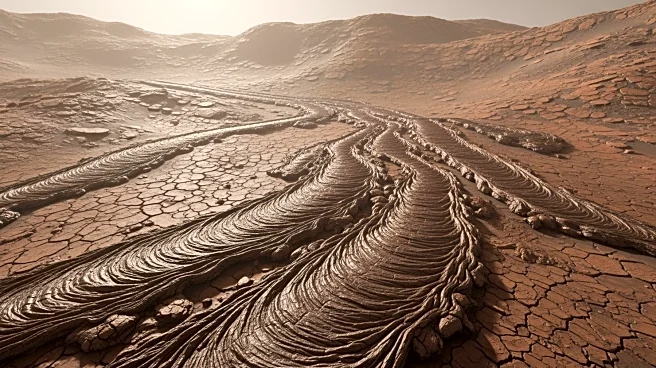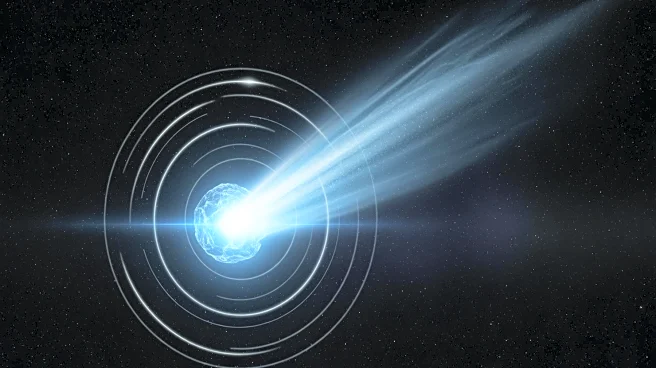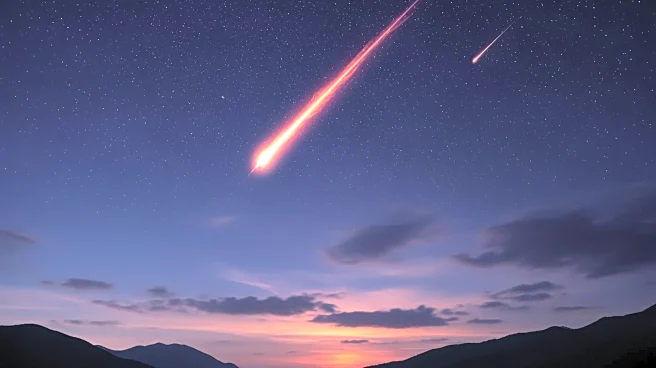What's Happening?
NASA is tracking a bus-sized asteroid, designated '2025 VP1,' which is expected to pass close to Earth at a distance of approximately 361,000 miles. The asteroid, measuring around 37 feet in diameter,
is traveling at over 18,300 miles per hour. Another asteroid, '2025 VC4,' is also being monitored, projected to come within 1.24 million miles of Earth. These near-Earth objects are part of NASA's ongoing efforts to track potentially hazardous asteroids, which could pose a risk to the planet over long periods.
Why It's Important?
Monitoring asteroids is crucial for planetary defense, as even small objects can cause significant damage if they impact Earth. NASA's tracking efforts help assess potential threats and develop strategies to mitigate risks. The presence of these asteroids highlights the importance of continued investment in space observation technologies and international collaboration in space safety. Understanding asteroid trajectories also contributes to scientific knowledge about the solar system's formation and evolution.
What's Next?
NASA will continue to monitor the asteroids' paths and update their trajectories as new data becomes available. The agency's efforts are part of a broader initiative to enhance asteroid detection and response capabilities. Future missions may focus on developing technologies to deflect or destroy potentially hazardous asteroids, ensuring Earth's long-term safety.
Beyond the Headlines
The tracking of asteroids underscores the interconnectedness of space exploration and planetary protection. It raises ethical questions about humanity's responsibility to safeguard Earth from cosmic threats and the role of technology in achieving this goal.
